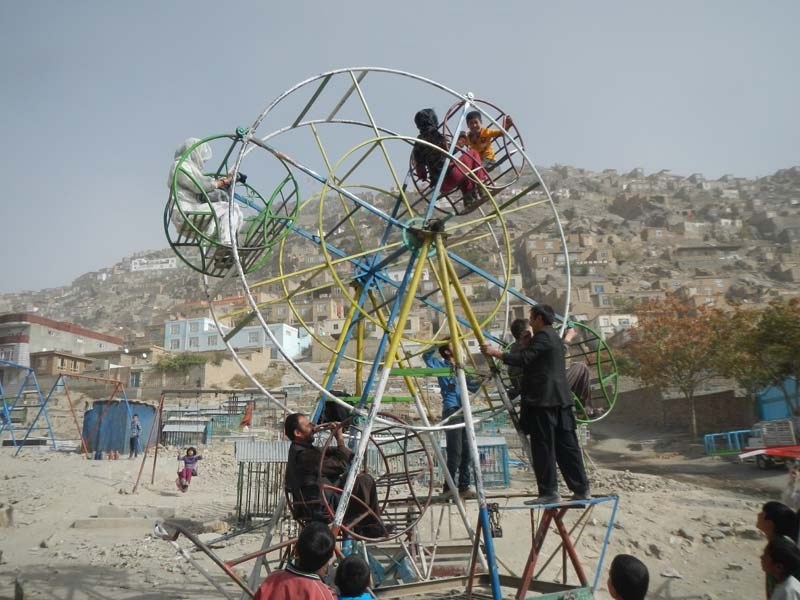It’s been almost a month since I ran the Marathon of Afghanistan and I have been asked many questions about the race. However, that was only seven hours out of an 11-day trip and I would like to share with you some of the other incredible aspects of my experience.
I arrived in Kabul on the morning of Oct. 28 and, along with three other racers, was met by James Wilcox, founder of the company Untamed Borders, the group with whom we were travelling. After dropping our bags at a guesthouse, we headed into the city. Our first stop was a bread shop. Large flat loaves were being baked in an underground oven and then sold from the front window to men and women who were buying armfuls at a time. We were offered tea, a ritual that was repeated throughout our trip.
We then visited the Shrine of Ali Mazar e Sharif. This is a beautiful, blue-tiled mosque, which sadly had been the site of a terrorist attack one month previously, killing 14 men, women and children. Despite that, families were visiting the site. As we were leaving, we walked around a wall and there, in an open area was the most amazing playground I have ever seen. All the equipment was handmade. The centrepiece was a hand-cranked Ferris wheel with four compartments, for four children. A man turned a huge handle to get the contraption spinning and the kids laughed and yelled as they went flying around. Also in the playground was a merry-go-round with tiny planes as seats and there were swings, a slide and a teeter-totter. It made me realize that life goes on no matter what others try and do to stop it.
Next day, we flew to Bamyan, in Bamyan Province, which is populated by the Hazara people. Historically, they are the most persecuted ethnic group in Afghanistan but they are also recognized as the most progressive in the support of girls and women’s rights in education and sport. The town has a population of 60,000 and is cradled between the Hindu Kush and Koh-i-Baba mountain ranges, at 9,000 feet elevation. It’s 240 km North West of Kabul but the road is deemed too dangerous to travel.
Driving into town from the airport, we passed a field where a farmer was working with a plough pulled by oxen. He was plowing around burnt out Russian tanks. There were at least ten tanks and troop carriers all from a previous era in history. The next day we travelled in two vans, 60 km west to the only National Park in Afghanistan, Band-e-Amir. We spent three hours walking along trails, which overlooked sheer cliffs into aqua blue lakes. At the end of the walk, we arrived at the tourist information centre. Near the building, along the shoreline, were 15 swan-shaped paddleboats. The 10 of us jumped into two- and four-seat boats and started cruising around the lake. We joined Afghan families who were out for the day picnicking and having fun. It seems the more things are different, the more things are the same.
If you want to hear more stories about the trip then come to the Cochrane Public Library on Dec. 10 at 1.00 p.m. for a presentation. Afterwards, I will be signing my new book Running to the Edge.
Everyone welcome.
© 2016 Martin Parnell
www.martinparnell.com




